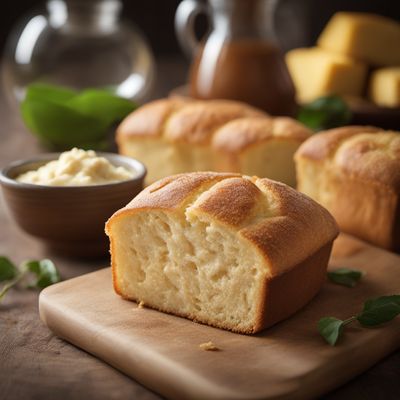
Ingredient
Fruit jelly
The Sweet Delight: Exploring the World of Fruit Jelly
Fruit jelly is a translucent, gelatinous substance made from fruit juice or puree, sugar, and pectin. It comes in a wide range of flavors, colors, and textures, from smooth and firm to soft and wobbly. With its vibrant appearance and sweet taste, fruit jelly is a popular choice for desserts, pastries, and even savory dishes like glazes or sauces.
Origins and history
The origins of fruit jelly can be traced back to ancient times, where it was used as a method of preserving fruits. The process of making fruit jelly evolved over centuries, with different cultures and regions adding their own unique twists. Today, fruit jelly is enjoyed worldwide and is an integral part of many culinary traditions.
Nutritional information
Fruit jelly is a low-calorie treat that provides a burst of fruity flavor. It is typically fat-free and contains a moderate amount of sugar. Depending on the fruit used, fruit jelly can also provide essential vitamins and minerals.
Allergens
Fruit jelly may contain allergens such as pectin derived from citrus fruits, which can cause allergic reactions in some individuals. Additionally, certain fruit jellies may contain traces of nuts or dairy if produced in facilities that handle these allergens. It is important to read the ingredient labels carefully if you have any allergies or dietary restrictions.
How to select
When selecting fruit jelly, look for brands that use high-quality fruit juice or puree as the main ingredient. Avoid products that contain artificial flavors or excessive amounts of additives. Opt for fruit jellies that have a vibrant color and a firm, yet jiggly texture. Reading online reviews or seeking recommendations from trusted sources can also help you find the best fruit jelly options available.
Storage recommendations
To maintain the freshness and quality of fruit jelly, store it in a cool, dry place away from direct sunlight. Once opened, refrigerate the fruit jelly in an airtight container to prevent spoilage and maintain its texture. It is important to consume fruit jelly within the recommended time frame mentioned on the packaging to ensure optimal taste and quality.
How to produce
Fruit jelly can be produced at home by combining fruit juice or puree with sugar and pectin. The mixture is then heated and cooled to achieve the desired consistency. There are numerous recipes and techniques available online that cater to different dietary preferences and flavor combinations.
Preparation tips
Fruit jelly can be used in a variety of ways in the kitchen. It is commonly used as a filling for cakes, pastries, and donuts, adding a burst of fruity flavor. Fruit jelly can also be used as a topping for pancakes, waffles, or toast. Additionally, it can be incorporated into sauces, glazes, or marinades to add a touch of sweetness and tanginess to savory dishes.
Culinary uses
Fruit jelly is widely used in desserts and pastries, such as fruit tarts, jelly rolls, and jellied candies. It is also a popular ingredient in breakfast items like Danish pastries or croissants. In some cuisines, fruit jelly is used as a glaze for meats or a condiment for cheese platters. Its versatility makes it a staple in many sweet and savory dishes around the world.
Availability
Fruit jelly is commonly available in grocery stores, supermarkets, and specialty food stores worldwide. It is cultivated and produced in various countries, including the United States, France, Germany, and Australia.
More ingredients from this category

Marmalade
The Zesty Preserve: Marmalade

Compote of fruit / vegetables
Sweet and Tangy Medley

Fruit preparations for fillings and/or flavouring
Bursting with Flavor: Exploring Fruit Preparations for Irresistible Fillings and Flavourings

Fruit or fruit-vegetable puree
The Versatile Essence of Pureed Fruits and Vegetables

Jam of fruit / vegetables
The Sweet Symphony of Fruit and Vegetable Jam

Fruit dessert thickened
The Art of Creating Luscious Fruit Desserts
Recipes using Fruit jelly » Browse all

Shanghai-style Bird's Milk
Silky Delight: Shanghai-style Bird's Milk

Molecular Meringue Delight
Whimsical Meringue Clouds: A Molecular Gastronomy Twist

Molecular Gastronomy Tiramisù
The Molecular Twist: Tiramisù Reinvented

Pan de Bono - Colombian Cheese Bread
Cheesy Delights: Authentic Colombian Pan de Bono Recipe

Homemade Sweet and Spicy Jezebel Sauce
Tangy Delight: Sweet and Spicy Jezebel Sauce

Chile Relleno with a Twist
Savory Stuffed Peppers: A Fusion of Flavors

Bhojpuri-style Spiced Egg Jelly
Savory Egg Delight: Bhojpuri-style Spiced Egg Jelly

Shanxi-style Almond Jelly
Silky Shanxi Delight: Almond Jelly with a Twist

Luxembourgian Kashkaval Pane
Golden Cheese Delight: Luxembourgian Kashkaval Pane

Queso Fundido with Chorizo and Roasted Poblano Peppers
Melting Cheese Delight: Spicy Queso Fundido with Roasted Poblano Peppers

Northern Irish Green Chile Cheeseburger
Spicy Irish Delight: Northern Irish Green Chile Cheeseburger

Dulce de Leche Bavarian Cream
Bavarian Dream: Creamy Dulce de Leche Delight